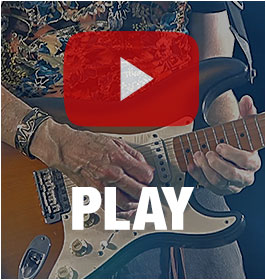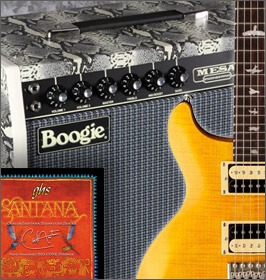Through a career that spans more than 40 years, tens of millions of album sales, and now includes a restaurant chain, a line of fragrance products, and another of women’s shoes, Carlos Santana has always been — first and foremost — a guitar player.
Santana’s playing style is legendary, as is the sound now known as the “Santana Tone.” In fact, that tone is so ubiquitous that it is held as an industry standard, with thousands of guitar players either looking for — or comparing their sound to — the Santana guitar tone.
How does Carlos achieve that sound? It’s a combination of his Paul Reed Smith signature guitars, his Mesa Boogie amplifiers (although his gear setup now includes a couple of other brands of amps as well), a few effects used very sparingly, and his unique style of playing guitar. The combination creates that “Santana Guitar” sound that is recognized worldwide.
Santana Guitar History
Although he has been playing Paul Reed Smith guitars nearly exclusively for more than 30 years, Carlos didn’t start on one. In fact, when the first album, Santana by Santana, came out in 1969, Paul Reed Smith didn’t even have a true guitar company. He was just a budding luthier with a love for music.
Carlos’ first guitar was a Les Paul Special guitar: a lower priced model in the Gibson line. Within a year or two, he had also incorporated a Gibson SG guitar, the guitar with which he is most often pictured during the early years. It was immortalized in the film Woodstock, which included Santana’s legendary performance of Soul Sacrifice.
Next, Santana played — almost exclusively — a Yamaha SG guitar, which was sort of a hybrid of a standard Les Paul (in thickness) and a Gibson SG (in shape). Carlos worked with Yamaha to develop the SG2000 from its predecessor, the SG175, and played it for 5 or 6 years.
More about the history of Santana Guitar models here.
Amplifiers and Santana
There wouldn’t be a “Santana Guitar” sound without the amplifiers that provide half the equation. In Carlos’ case, for most of his career, that has been Mesa Boogie amplifiers. Not for the first couple of albums, though. Then, it was a Fender Twin amplifier — albeit souped up by Randall Smith, who is president of Mesa Boogie.
More about the development of Mesa Boogie and the Santana guitar sound.
Santana Guitar Style
Finally, there is Santana’s playing style itself: The long held notes (sans vibrato), the unique phrasing which puts notes both earlier and later than you might expect them, and the trademark trills that infuse his blues scalar playing with a Latin flavor.
More about how Santana’s playing style shapes his sound.
Final Notes
Probably the smallest factor in Santana’s sound is his use of effects, which is sparing at best. An occasional wah wah (sometimes left in one position, as on “Samba Pa Ti”), the infrequent appearance of a distortion pedal, and a digital delay. These are more spot touches, however, and don’t make up the bulk of the fat, rich tone, full of sustain, that the world has come to associate with Carlos Santana.


